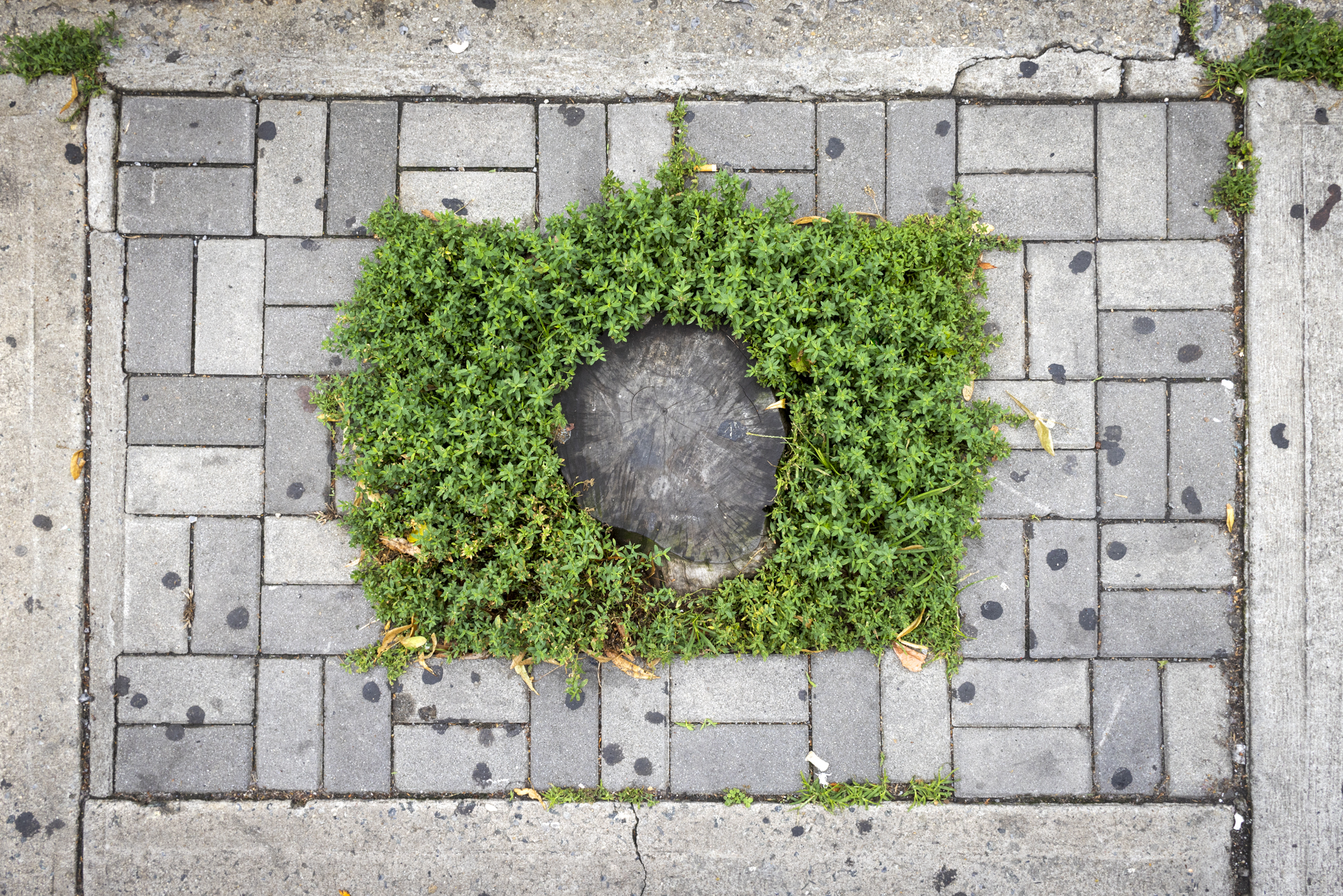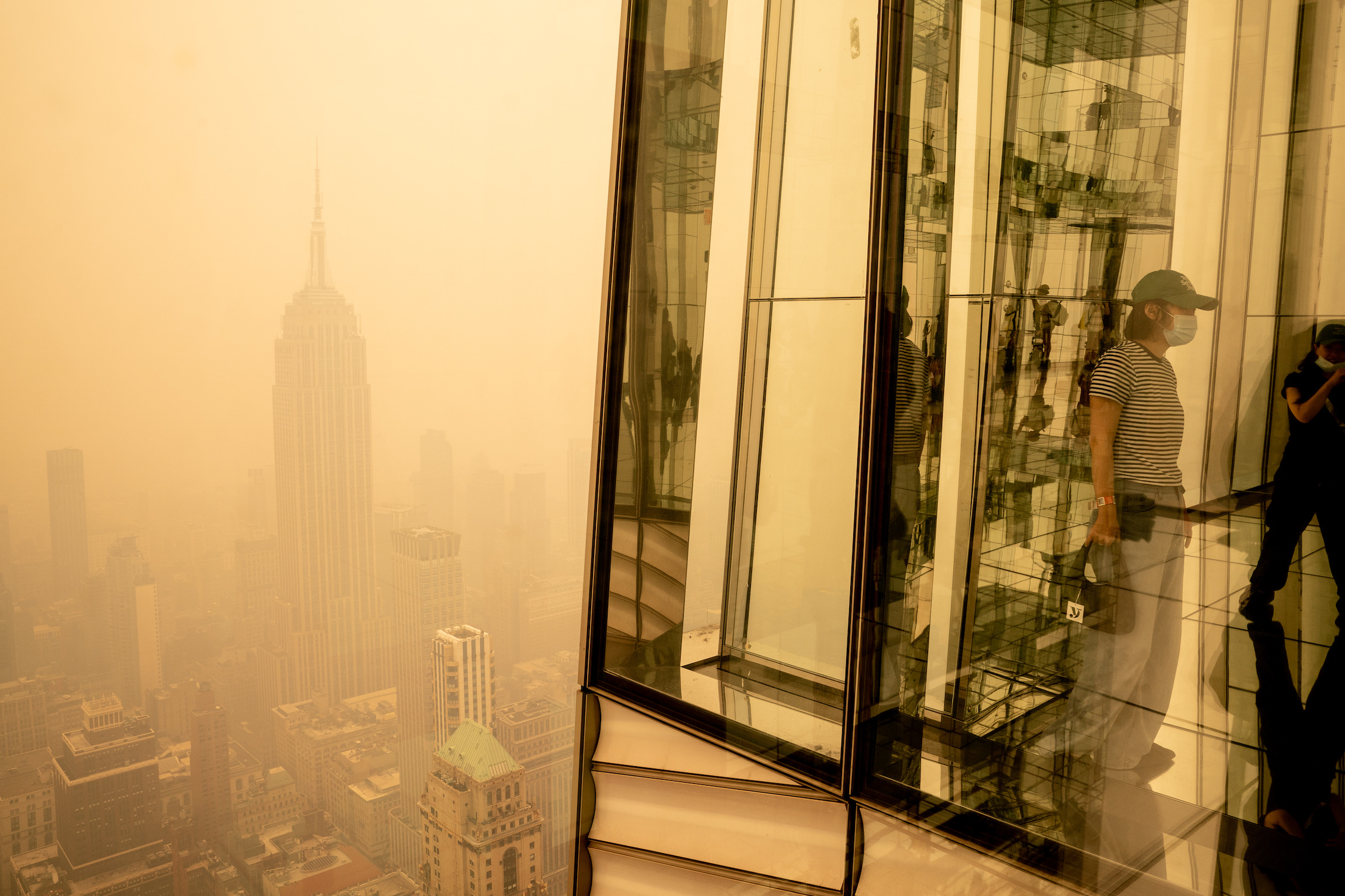The average pedestrian on a city stroll is more likely to notice the tall, flowering trees they see above them than the remnants of trunks no longer there. Photographer Alexa Hoyer is unique: It was the derelict, abandoned sidewalk tree beds that she couldn’t ignore when she moved to Ridgewood, Queens. Fallow Frames is her project documenting these accidentally artistic tableaux found in her neighborhood. From March 9 through March 31, Manhattan’s PS122 Gallery is exhibiting the body of digital photographs alongside a group show curated by Hoyer that uses the tree bed as a conceptual and aesthetic starting point.
New York City in particular places a premium on space. It’s a question of how much of it you have, how long you’ve had it, and who had it before. Hoyer, who is originally from Hamburg, Germany, sees a darker subtext hidden in the details of public urban life. Throughout 2020, she documented boarded-up storefronts and social distancing street markings. As captured in her bright compositions, ad-hoc arrows, dots, and six-feet-apart chalk drawings become “part of a vast installation across the city,” she told Hyperallergic.
Abandoned tree beds might be interpreted as blank spaces, indicative of a kind of urban void. Perhaps they have something to say about the unequal distribution of green space. But Hoyer, who has a sculpture background, is most interested in seeing them as “readymades” in the tradition of Marcel Duchamp or Robert Rauschenberg.
“When removed from their context and viewed in multiples, they take on a kind of abstraction, possibly even confusing the viewer about their true nature. What exactly am I looking at?” Hoyer said. “This is why I photographed them all head-on, excluding the surrounding streets, essentially creating a canvas for contemplation.”

During her research stage, Hoyer encountered several artists already using empty New York tree beds in their work. Lee Cannarozzo’s land art experiment Flax Estates (2022) saw the artist cultivating abandoned tree beds in Chelsea (most of which were destroyed by pigeons, dogs, or city workers). Another artist, Jude Tallichet, sculpted “Heat Map” (2019) from a large cast of an overgrown root system found near her studio, also in Ridgewood.
These works inspired Hoyer to curate a group show — which also includes bioplastic paintings by Liz Atz, drawings by Alexandra Borovski and Ethan Shoshan, sculptures by Matt Freedman and Alexander Zev, and earthwork by Katarina Jerinic — but she’s hesitant to lump them under one umbrella. “There are numerous themes that are explored, such as urban interventions, sustainability and environmental awareness, gentrification, material experimentation, the concept of absurdity,” Hoyer said.

“Fallow Frames” was partly funded by a 2023 grant from the Queens Art Fund, and it eventually reached an audience local to the neighborhood and beyond the traditional art world; architects, community gardeners, and environmental activists were reaching out to Hoyer with interest. Using Google Maps, she created a walking tour that corresponds with her images. It’s a counterpoint to the Parks Department’s map of every official tree planted by the city.
Today, there are 6,397 trees reported in Ridgewood. Will that number decline? In turn, one imagines, Hoyer’s map continues to grow.




